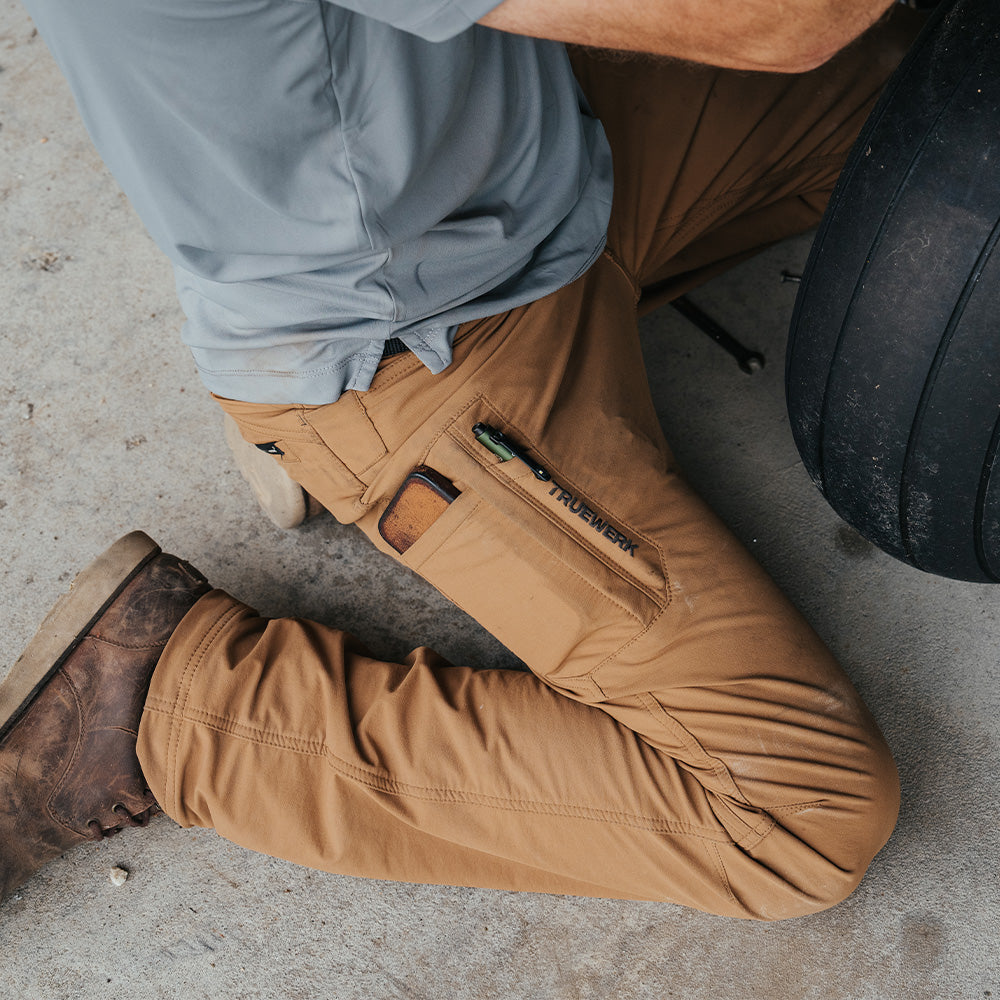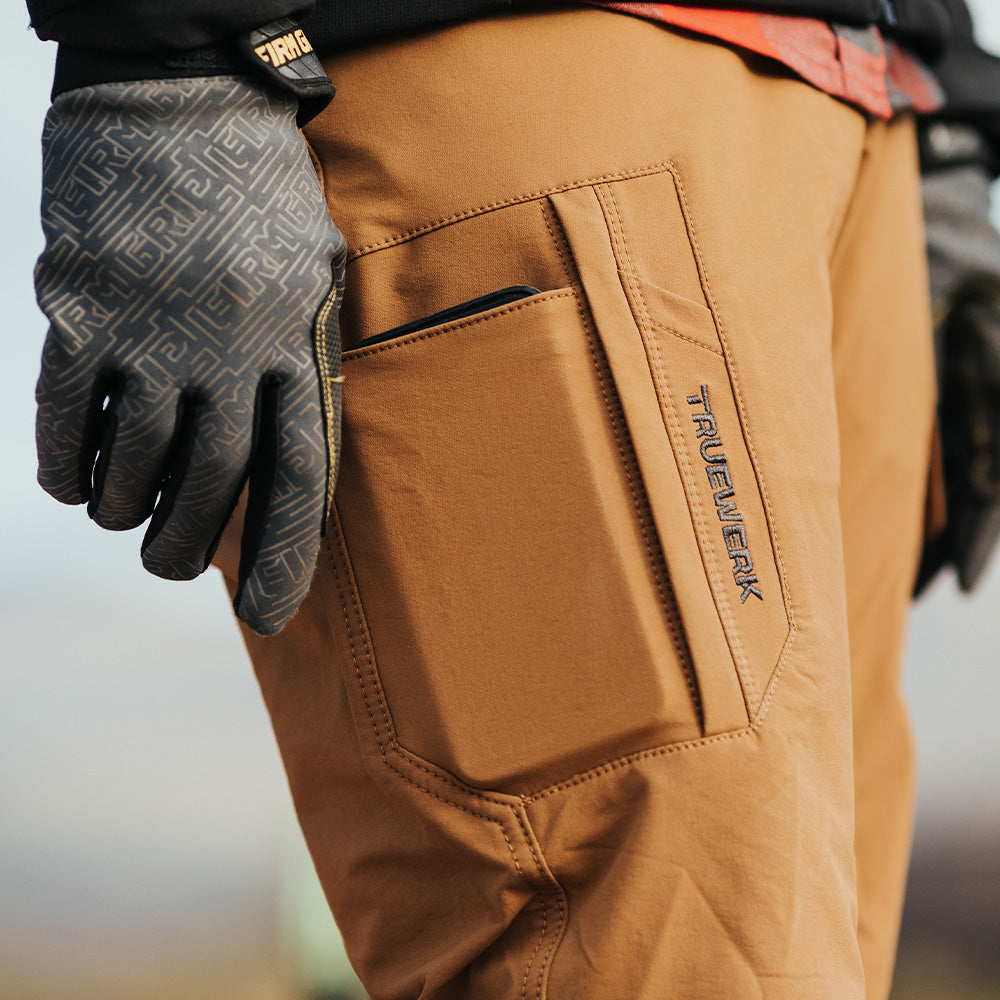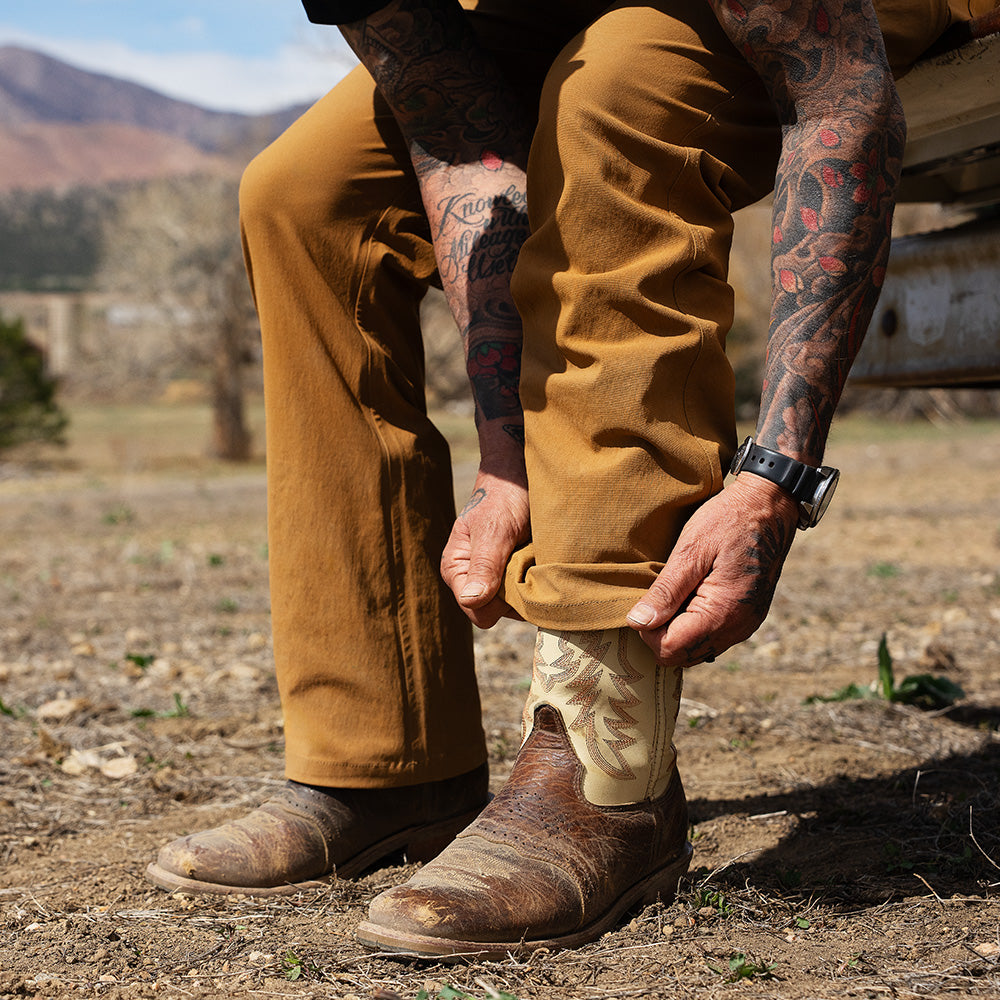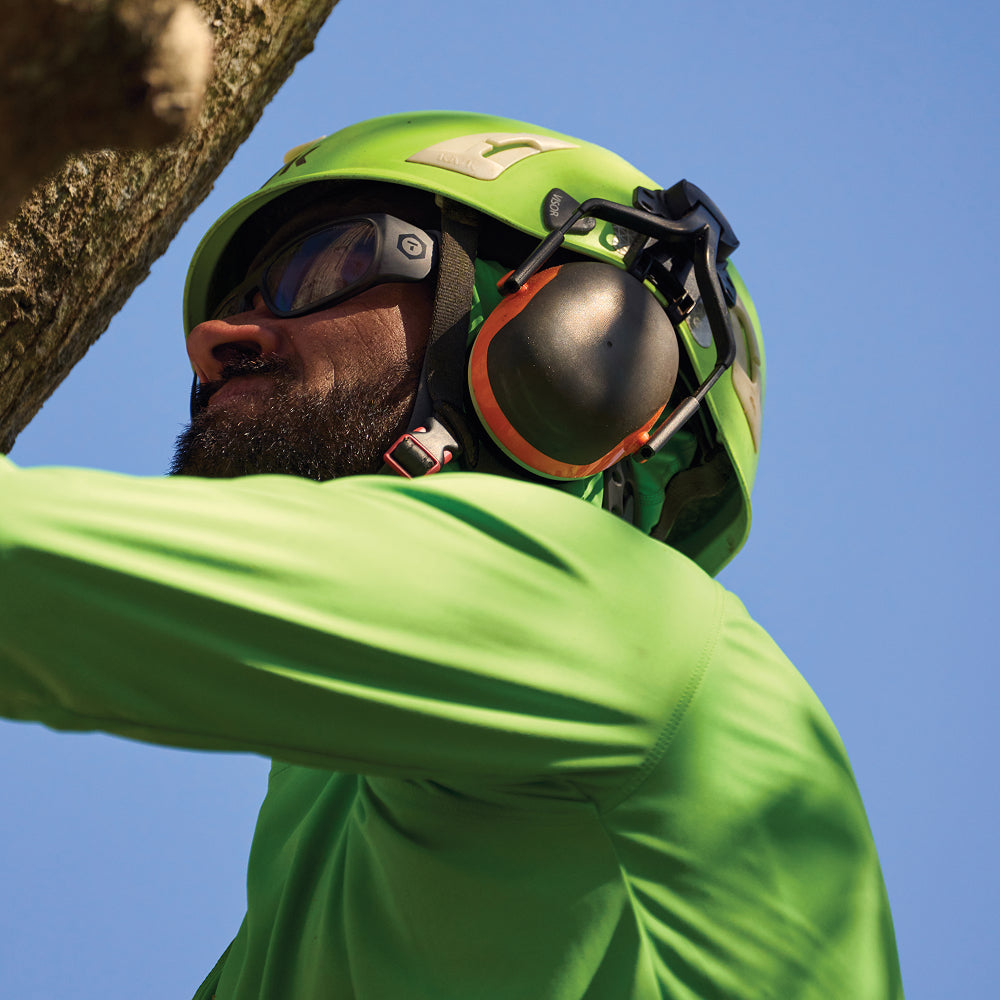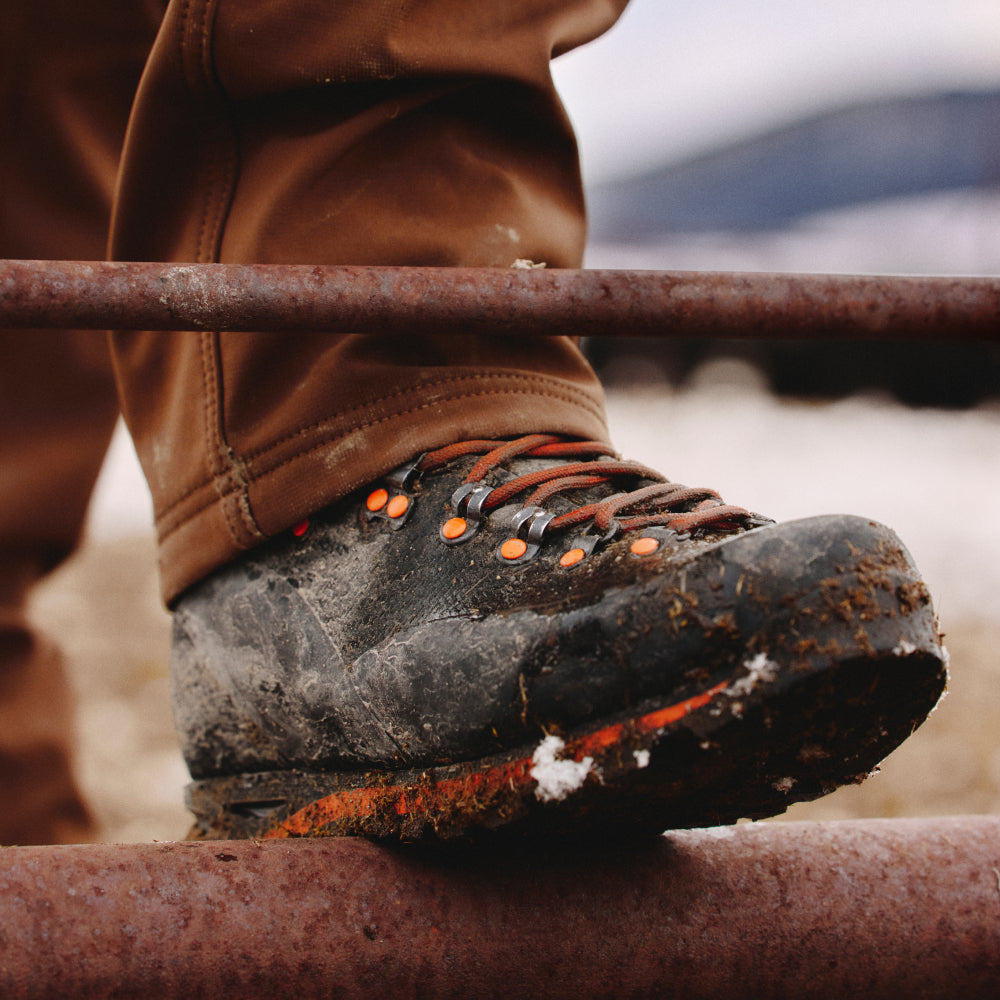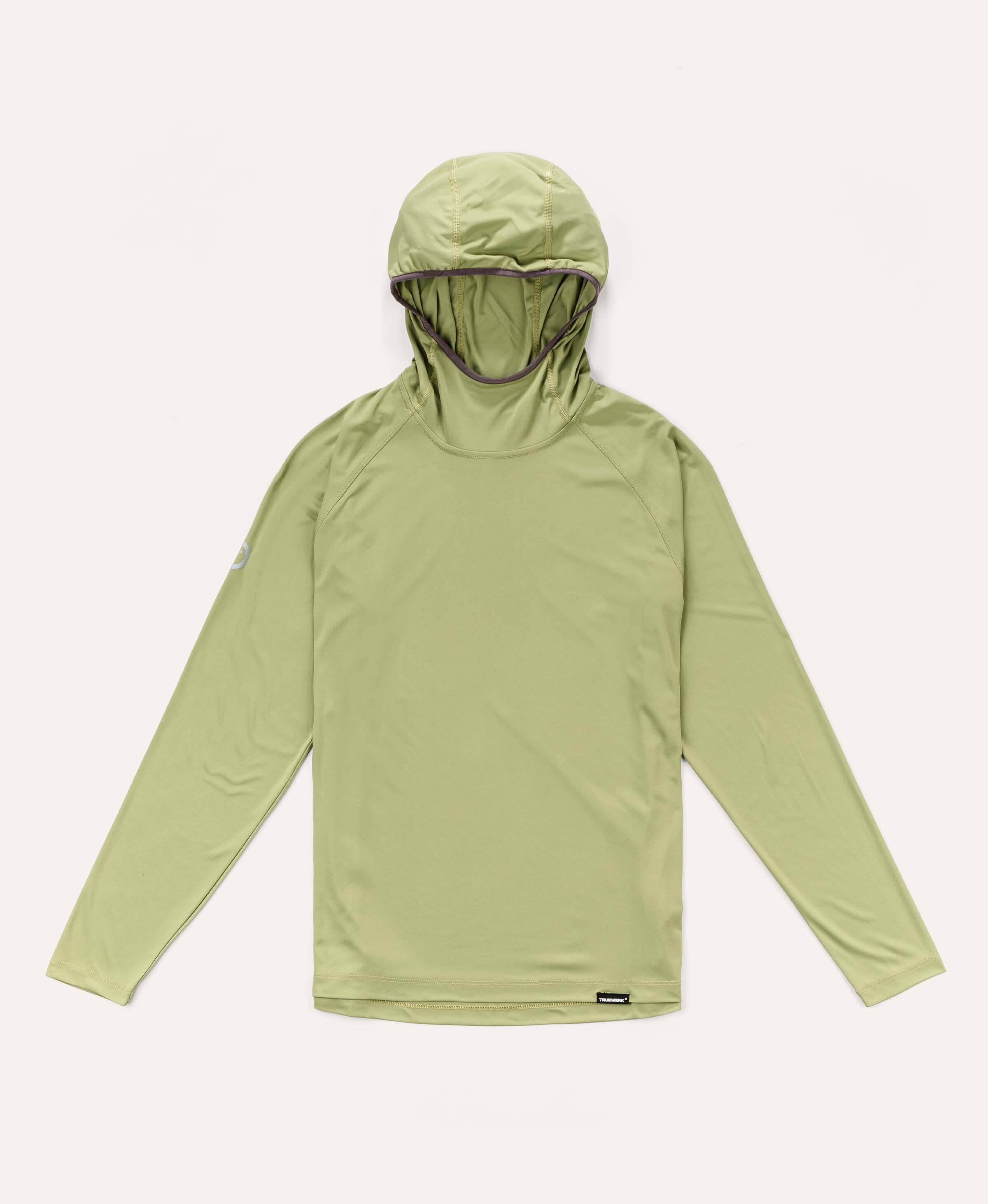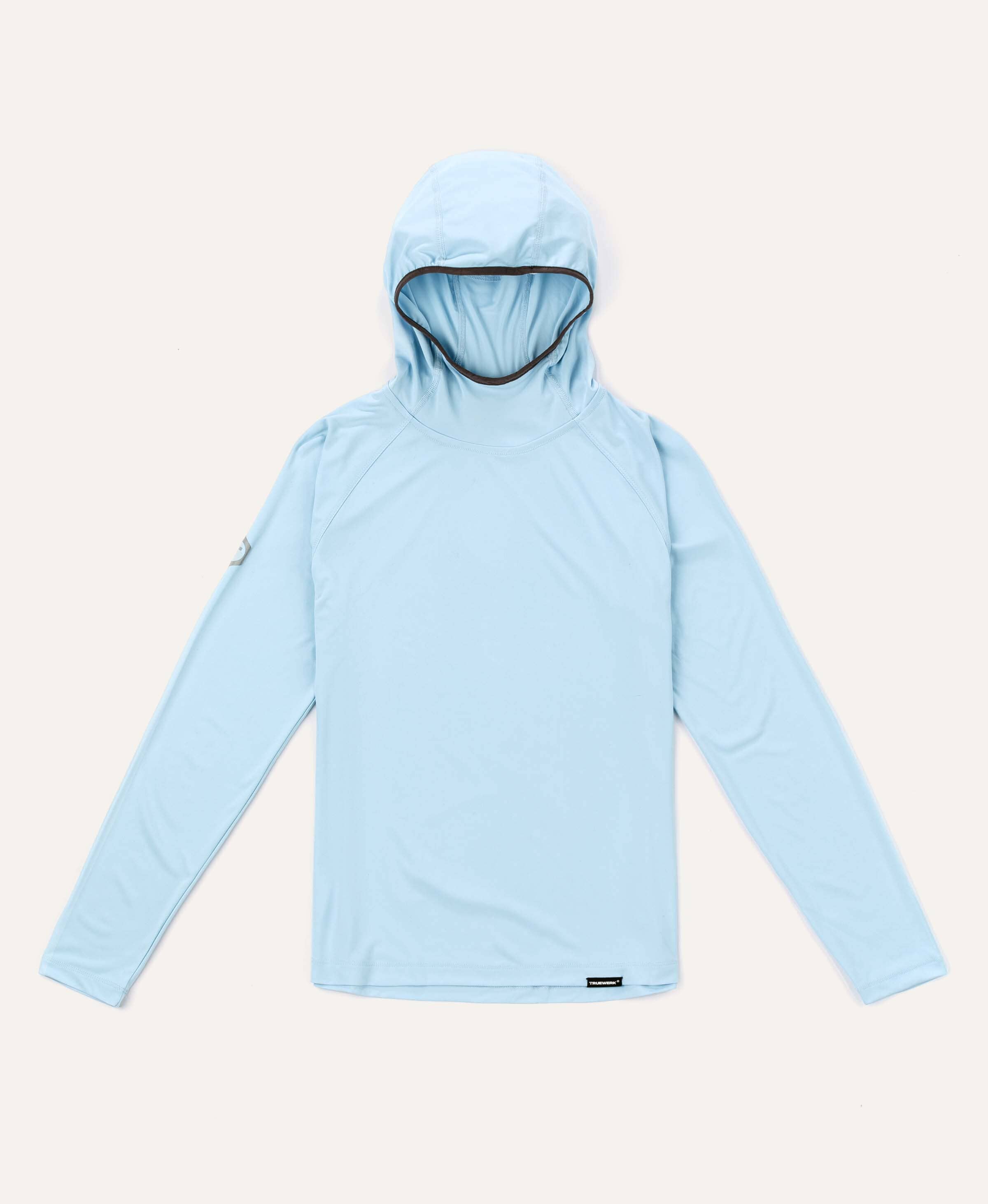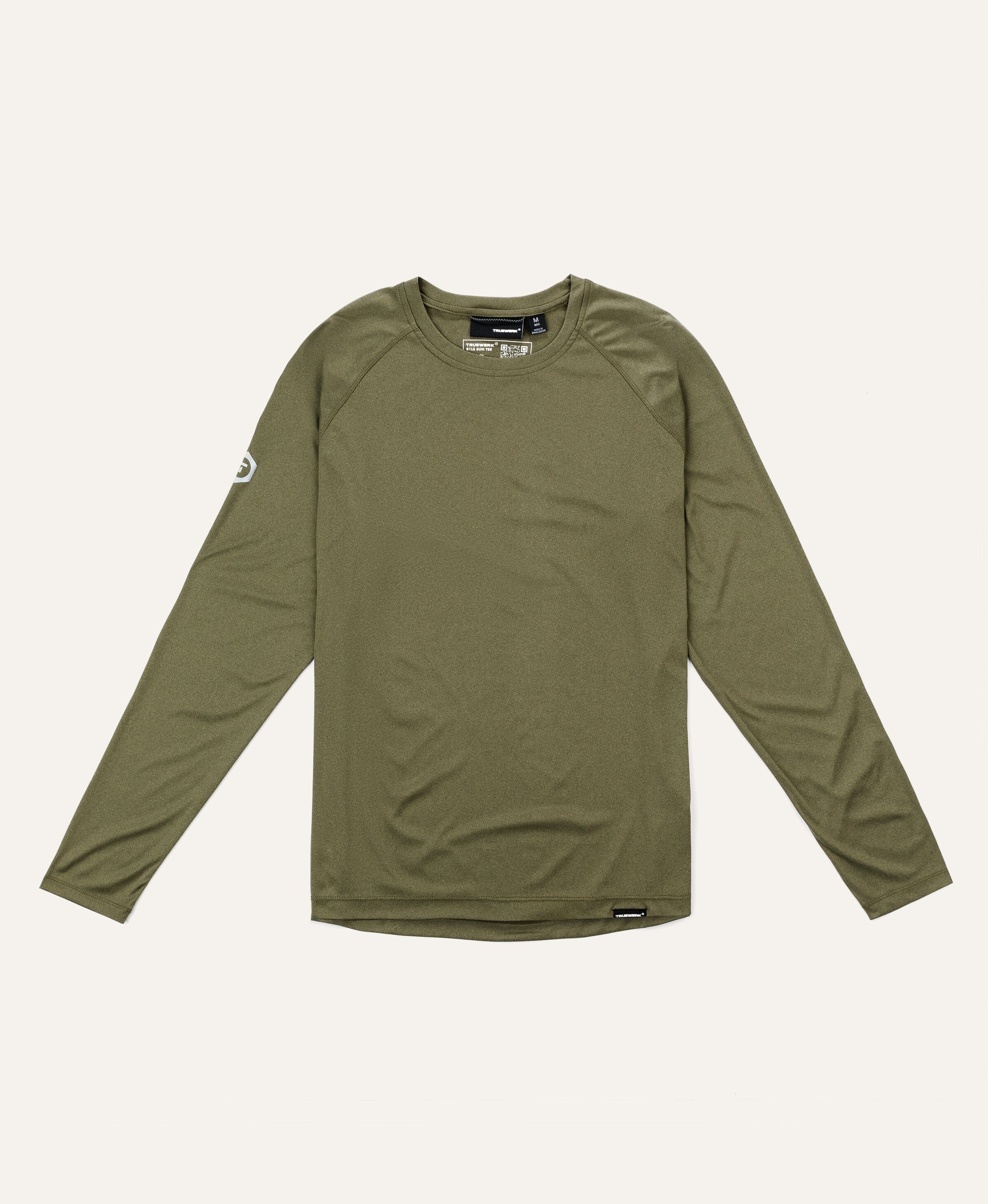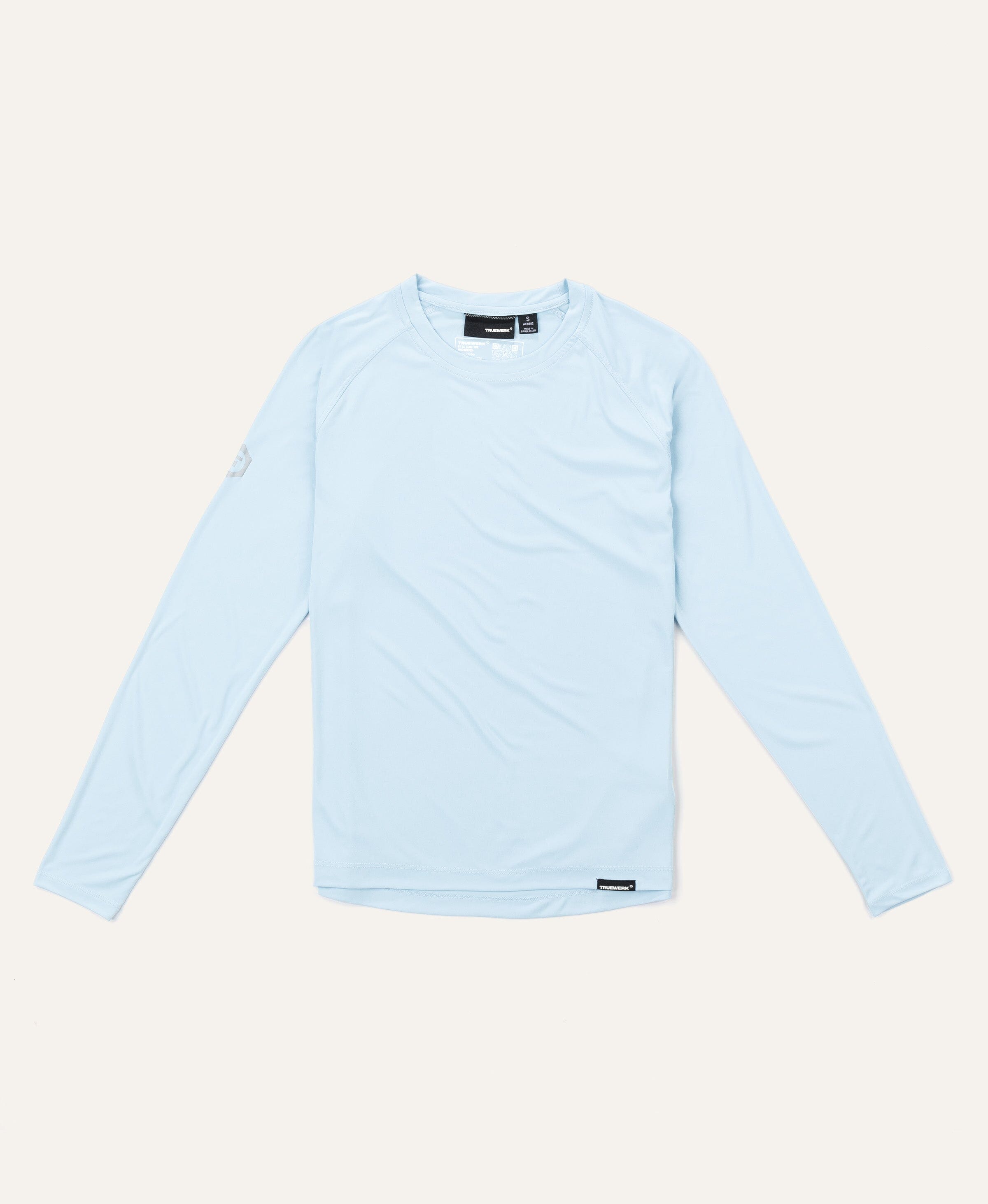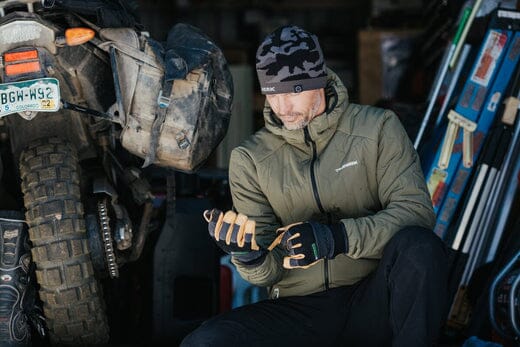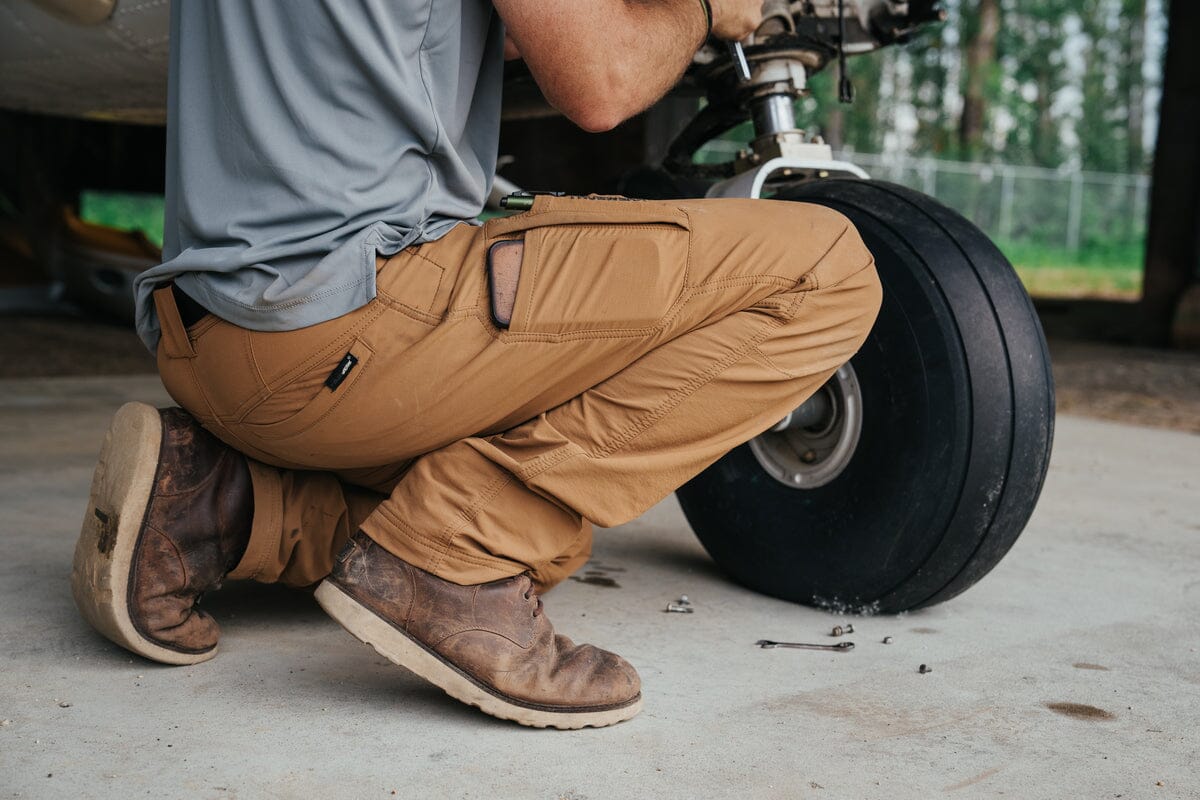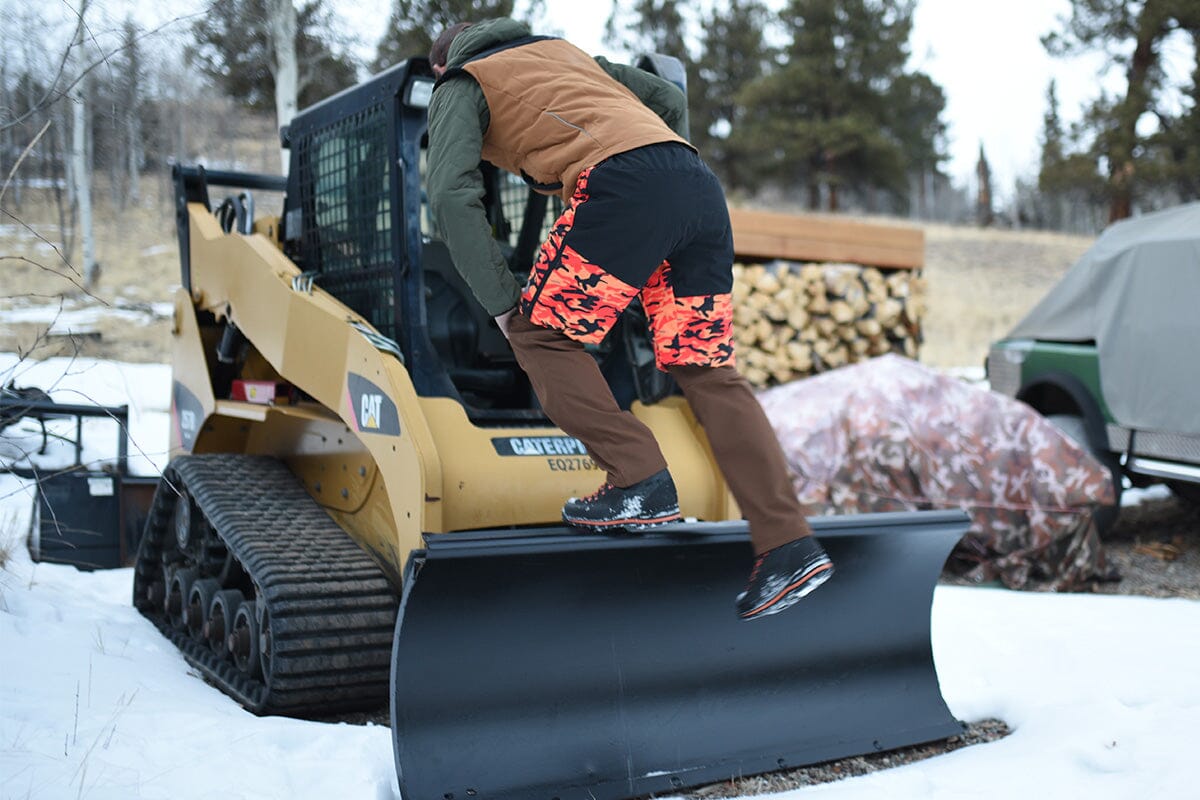What's up guys? Brian here from TRUEWERK. In a couple of minutes here, I want to take you through what works for me in keeping my hands warm in the mountains here in Colorado. My number one rule is warm hands are safe hands, and I do my best to make sure that I don't try to tough it out. I don't try to be Mr. "I can just deal for a few minutes with my hands being cold," because I know that when my hands get cold, they aren't as dextrous. I get sloppy, and that's not good. That's not good for my productivity. It's also not good for my safety, so I do everything I can to prioritize keeping my hands warm. Here's what's worked for me, I'm going to try and go through four or five things that are core.
Tip 1: Keep the Core Warm
Speaking of core, my number one tip for keeping my hands warm in the wintertime is keeping my core warm. I've found over the years that if my core is not warm, my body isn't going to send blood to my hands or my feet, and they're going to get cold. So what I do is I try to wear vests, I wear a hat, and I have been experimenting--and I'll talk more about this in another post--with insulated shorts to try to keep my core of my lower body warm. What I found is that I have to be near a sweat, really warm in my core, before my body is going to send blood to my hands. And if I can do that, if I can achieve nearly breaking a sweat in my core, almost guaranteed my hands and feet are going to be warm. That's far more effective than anything I can do with gloves to try and achieve that.
Tip 2: Practice with Gloves On
Beyond core, how do I also try to keep my hands warm? Number two for me has been practicing learning how to work with gloves on. And in order to do that and keep them on my hands as often as I can, I've had to practice over the years. This started with ice climbing. I had a mentor of mine years ago from Romania who would not let me take my gloves off, and I learned how to do things differently as a result of that. And so for me, I prioritize keeping gloves on. This is just one example: athletic tape, electrical tape. The big deal here is that if you start with a piece of tape that is stuck to the roll and nobody has folded it over, you're screwed. If you get a practice of always taking the tag in, folding it over, it's no problem to manipulate that.
And carry that through everything you do. You will learn how to work with your gloves on. I can manipulate anything that is bigger than three-eighths hardware in the dead of night with a pair of gloves on, but it's all because I've practiced doing it. So that would be my number two tip is practice working with big, bulky gloves on. Don't take them off every time you got to do something, and see just how much dexterity and how much technique you can develop with a pair of gloves on.
Tip 3: Choose the Right Fit
Tip number three that's related to that. I have come over time to appreciate gloves for work that have bigger openings in the cuff, things like this Hestra Winter Pro, I can get this on and off far more easily. This is another Hestra glove, very high-end pro work glove. The cuff on this is such that if I were going to put this on and leave it on all day like I did when I was ice climbing, this is a fantastic glove. But in a situation where I don't have to do that, and instead I'm going to be in and out of my gloves all day, I like gloves that I can get on and off. And I'm typically putting them in my armpits and then moving in and out of them, and I can get into these gloves very quickly. It makes it so that I'm going to do everything I can to keep my gloves on. But when I got to take them off, I can do it quickly, and then I get back into my gloves right away.
Tip 4: Use Toe Warmers
Tip number four, this is related to hand warmers versus toe warmers. One, use these things guys. Don't be a tough guy. Take these things out. Put them in your gloves. Keep your hands warm. They help, right? And again, warm hands are safe hands. That's my number one priority. I have learned that I really prefer toe warmers to hand warmers for several reasons. Number one, you can see from the package. Toe warmers, smaller, right? There's a lot less to a toe warmer than it is to a hand warmer. The other big thing is that toe warmers, one they're thin... I find that hand warmers turn into little pillows, and I don't like that. I like a thin warmer in my glove. The other big thing, and this is probably the most important thing, is that toe warmers come with these little adhesive backings. This is beautiful.
What I do is I take this little adhesive backing and I stick it...not to the bottom, not to the palm. I stick it to the top of my glove, the roof of my glove, if you will. And that secures the warmer right on the back of my hand. And that little guy is shaped perfectly for the back of my hand. And it turns out that that back of my hand is where all the vasculature is. That's where all the blood flow is, and it's feeding the blood to the tips of my fingers. If I can keep this part warm, I'm going to keep the fingers warm better than if I tried to put the thing in the palm of my hand. The other big problem is if it's in the palm of my hand, I'm losing dexterity.
And again, the issue is that if it doesn't have the adhesive, the thing falls out, and I spend all day trying to find my hand warmer. It's in the snow. It's lost. It's a mess. So my big advice, guys, stick to toe warmers, putting them on the back of your hand. For that matter, put them on the back of your foot. I see a lot of guys trying to cram those things under their foot. And maybe it works for them, and if it does, great. If it works for you, keep doing it. My experience has been that getting warmers, specifically the adhesive kind, on the back of my hand, the back of my foot, gets the blood warm and it does a far better job than if I'm trying to put those things on the insides.
Tip Five: Four is a Pair
Tip number five, and this is a quick one. In the medical industry, if you're a first responder and you're dealing with nitrile gloves, you know that the saying is three is a pair. For me, with winter gloves, my saying is four is a pair. I want to have four gloves with me at all times. If I drop one, if one gets soaked, whatever the case may be, I never leave the truck further than I can hit it with a baseball without two pairs of gloves. Hopefully, those top five tips keep your hands a little warmer and keep you safer, more productive on the job site.
Why Hestra?
I want to take you through some of the gloves that I'm using today and why. The pair that I've adopted, the pair that I like most, and the pair that TRUEWERK is actually able to carry on our website is Hestra. These things work awesome for me. They're a great value, and we wanted to make sure that you had access to them. Let me tell you what I like about these and some of the things that I've adopted relative to what I've used over the years.
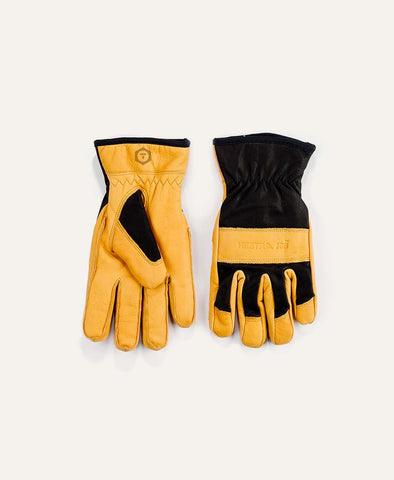
Number two glove for me over the years has been this Kinco, and if any of you have been in the industry long enough, you know what this thing is. It's cotton-backed. It's got insulation in it. It is a pretty good glove is what I would say. And I used these until these Hestra Winter Pros came along. Here's what I love about the Hestra Winter Pro. I would call it a comparable amount of insulation. I don't know to what extent the insulation quality is that much better in one or the other. Honestly, for me personally, they seem about the same.
The things that I love about the Winter Pro from Hestra, number one is it's got a waterproof liner in it, which gives me a ton of confidence and a ton of comfort that if my hand is getting into wet snow, I'm going to have the liner here. The Kinco's got cotton backing. And I've gotten by with snow sealing the hell out of those things over the years, and it's okay, but I've also had them soak through, and it's a problem. Water is your enemy when it gets under your hands, and having a waterproof liner on the Hestra Pro is a big upgrade. Secondly is just the quality of the leather. You're not going to see this in the video, but the quality of the leather in the Hestra Pro, in my opinion, is hands down a better quality leather. And that stuff starts to matter.
Here's a pair that I was wearing over the course of the last year. Somewhere along the way, [this rip] happened. I don't know what would've happened if I had been wearing this [Kinco] leather. I'm happy I had this [Hestra] on when that happened. The last thing I wanted to point out, if you look at the construction of the fingertips...And we talk a lot about dexterity. I like to work with my gloves on for as long as I possibly can before I got to take them off, because why? Because they keep my hands warm. Warm hands are safe hands. That matters to me.
Look at the construction. Do you see how the Hestra...This is the Hestra Winter Pro. Do you see how that's got the seam on the outside of that fingertip? Kinco has the seam on the inside, traditional glove construction. After they sew it...It's like a pillowcase. They turn it inside out, and the seam ends up on the inside. The problem is the seams are bulky. The fingers are small on a glove, and if you got to turn the seam inside, that adds to the bulk, and it decreases the dexterity of the glove. This is the same size glove. Look at the thickness of that Kinco. Look at how fat those fingertips are. Look at how thin and narrow and precise the Hestra is. It matters when you put these gloves on, guys. And so from my perspective, that's caused me to switch.
Now, let me talk about the cost real quickly. These Kincos are about 30 bucks. Hestra Winter Pro is 45, right?* It's more expensive. But when I look at the value that this glove is providing, I would have to move to something like...This is an ice climbing glove from Black Diamond. I don't know what these cost. They could be over a hundred bucks, 79 to 130 bucks. At 45 bucks, the Hestra Winter Pro is about as good of an option as I've ever seen. They're my go-to glove when my best matters most, and I'm glad we're able to make them available to you. I hope you guys will check them out. Let us know what you think.
*Hestra Winter Pro Gloves at $39.99 on truewerk.com
